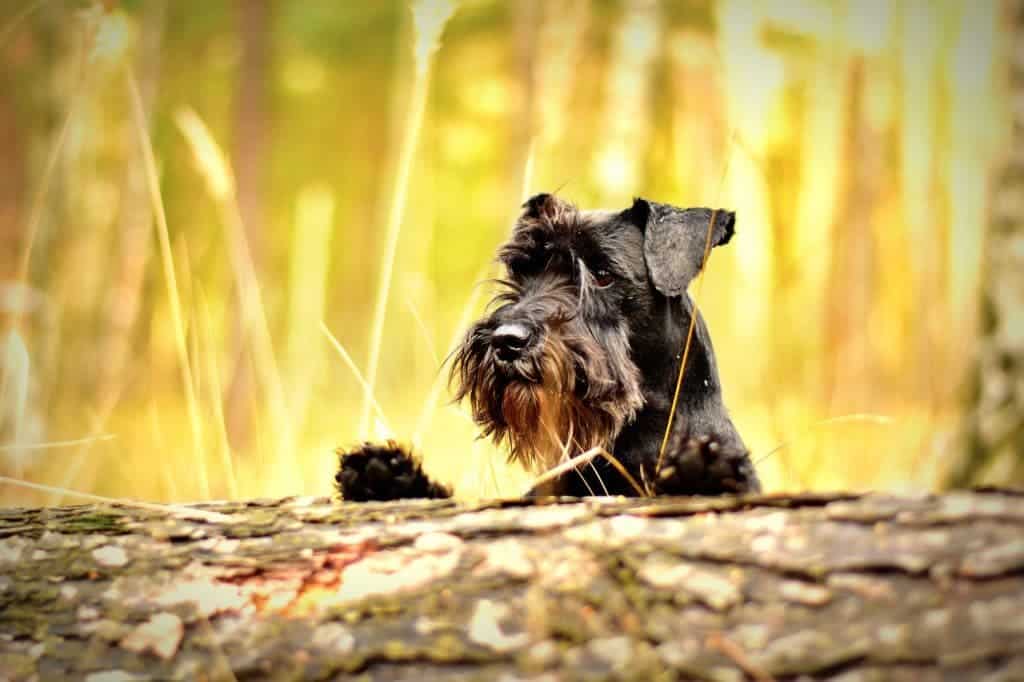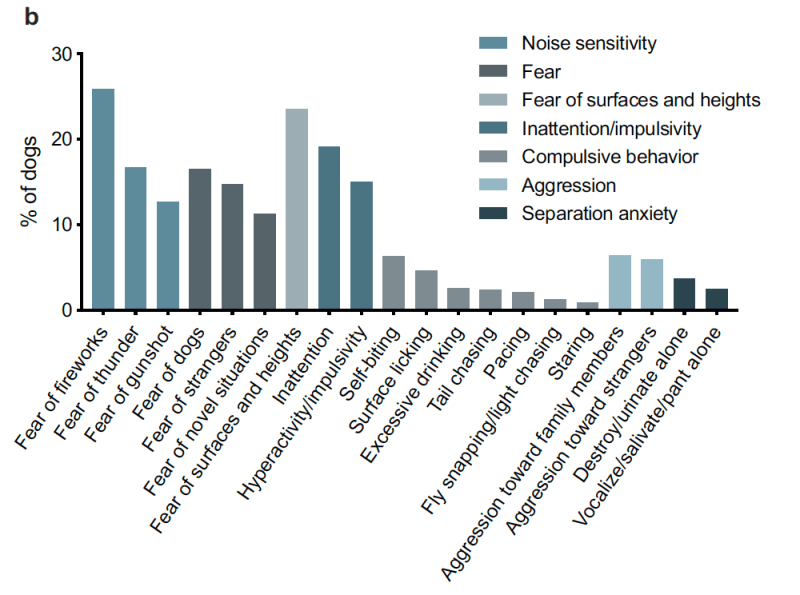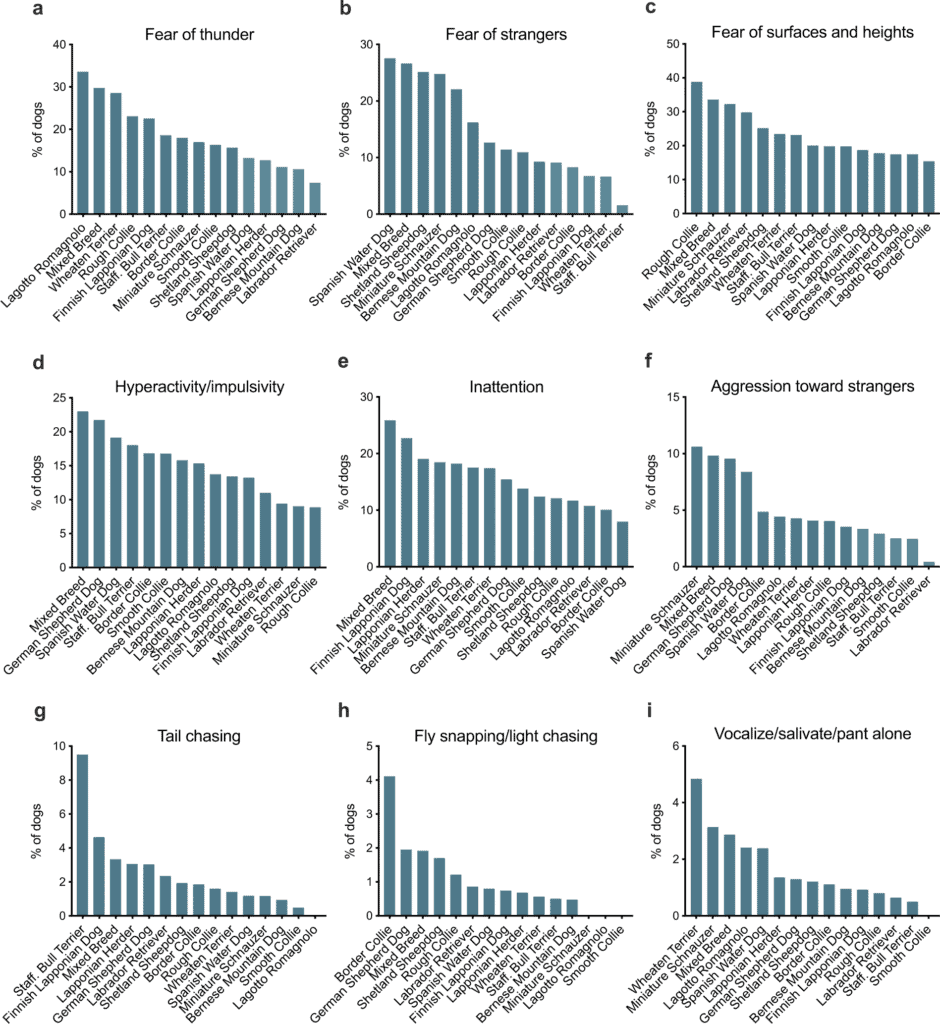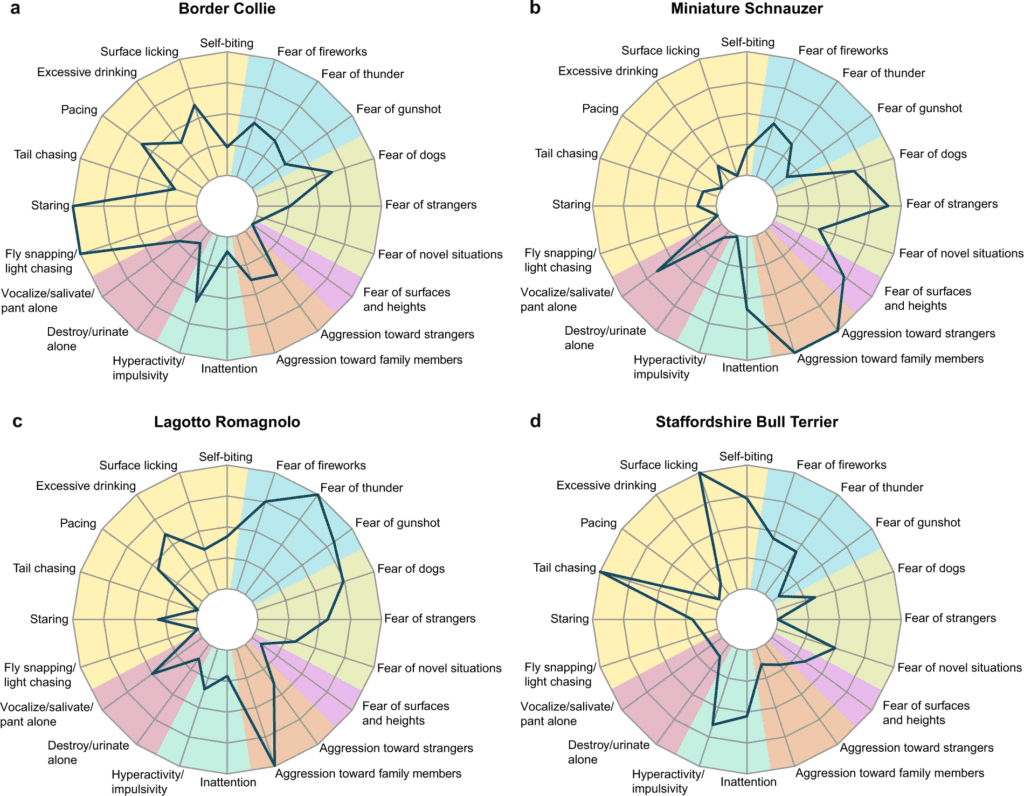It’s not just humans that suffer from behavioral problems, dogs get them too. Some of these problems may include excessive barking, destructiveness, aggression, and fearfulness. A new study of nearly 14,000 Finnish pet dogs examined seven anxiety-like traits, finding that nearly three-quarters (72.5%) of dogs had some kind of highly problematic behavior.

The study involved 13,715 dogs from 264 breeds, including 200 mix-breed dogs. The most common anxiety trait was noise sensitivity with 32% of dogs being highly fearful of at least one noise (i.e. thunder, fireworks, etc). The second most common trait was fearfulness (i.e. fear of other dogs, fear of strangers, etc.) with a prevalence of 29%. Separation related behavior and aggression were the most uncommon traits with a prevalence of 5% and 14%, respectively.

The dogs’ behavioral traits were reported by their Finnish owners through an online questionnaire. Their answers were then compiled into a dataset that classified and ranked the dogs’ as being either “low trait” or “high trait” depending on the severity of their anxiety-related behaviors.
Typically, self-reported data is not seen as the most reliable. In this case, however, there’s no better source to describe a pet’s behavior than their owners. In fact, Milla Salonen, the first author of the new study and a Ph.D. student at the University of Helsinki, told Gizmodo that “dog owners are actually pretty good at evaluating their animals” and “dog personality questionnaires are as reliable or even slightly more reliable than human personality questionnaires.”
According to the findings, many anxiety-related disorders became worse as dogs got older, especially for fear of thunder, fear of heights, and fear of certain surfaces. Younger dogs were more likely to display inattentive, hyperactive, and destructive behaviors compared to older dogs, frequently damaging stuff around the house or urinating indoors when left alone.
There were major differences in anxiety traits from breed to breed. For instance, 15.3% of border collies were fearful of heights compared to 38.7% of rough collies. Only 1.5% of Staffordshire bull terriers were afraid of strangers, whereas 27.5% of Spanish water dogs were fearful of new people. Labrador retrievers were the least aggressive, with only 0.4% exhibiting such tendencies. Meanwhile, 10.6% of miniature schnauzers showed significant aggression, making them the dogs with the highest prevalence of this behavioral trait out of all breeds involved in the study.

These behaviors have a major genetic component, the researchers wrote in the journal Scientific Reports. Relatives of compulsive dogs tend to share the same behaviors and previous studies have associated genomic areas with fear, noise sensitivity, and other problematic behaviors. Environmental factors such as training, physical activity, maternal care, and owner
Male dogs had a higher prevalence of aggressiveness, separation-related behavior, inattention, and hyperactivity/impulsivity. In contrast, female dogs had a higher prevalence of fearfulness, the study found.
Researchers also found that these behavioral problems were rarely alone and exhibited comorbidity. For instance, hyperactivity/impulsivity was correlated with inattention and compulsive behavior. Care to guess what other animals also show similar associations? Yup, humans.
“Behaviour problems, especially aggressiveness, may be public health concerns. Some of these behaviour problems have been suggested to be analogous, or possibly even homologous to human anxiety disorders, and the study of these spontaneous behaviour problems arising in a shared environment with people may reveal important biological factors underlying many psychiatric conditions,” the University of Helsinki scientists wrote.

The fact that so many dogs suffer from anxiety disorders might come as a surprise to many owners. In the future, the researchers plan on conducting more studies in order to identify which environmental and genetic factors are behind each anxiety-related canine trait.
Until then, dog owners should be more cognizant of these behaviors and take steps to mitigate them in order to improve their pets’ welfare. The researchers also advise people looking to adopt a dog of a certain breed to be mindful of their personality and underlying behavioral problems in order to match their own. For instance, if you’re more sedentary you should pick a breed that is hyperactive and requires a lot of exercise. After all, owning a dog isn’t all fun — you’re also responsible for their mental health and wellbeing.
Also, if your dog misbehaves due to their anxiety-related traits, the last thing you should do is punish them. A study published last month found that shouting at your dog caused canines to exhibit more stress-related behavior and showed a lower mood.






